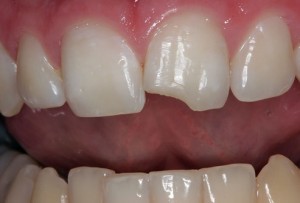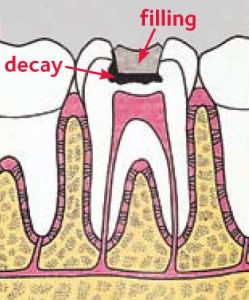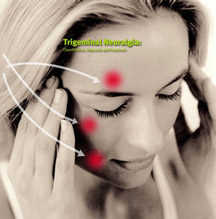Continued from Part 1
Teeth grinding habit
Clenching and grinding or bruxing of the teeth can cause additional occlusal load or stress to the teeth and may lead to fracture of a restored tooth, causing pain.
After root canal treatment
Sometimes tooth pain after root canal may be felt and this is usually due to instruments or cleaning agents used during the procedure, or to debris being forced into the end of the tooth. Occasionally an acute flare-up of a previously painless tooth occurs due to initial cleaning of the root canal – this is called a ‘phoenix abscess’. The canal would need to be cleaned again and resealed.
Dislodged or lost filling
Sometimes a filling may fall out after the filling was placed and the person may be unaware of this especially if the filling is placed in the upper back teeth, thus feeling pain after the dental appointment. This is more likely to happen if the:
- Filling is not properly packed.
- Tooth cracks or breaks.
- Filling is large.
- Filling is under stress because of teeth clenching and grinding.
Secondary tooth decay
Though pain is not felt immediately after dental filling and may take many years later, a tooth that has decayed before and has been filled is at risk of further decay if no proper oral hygiene is practiced. If a filling cracks and the person is unaware of this, food and plaque can gather in the space and the tooth can decay very quickly leading to dental filling pain in the restored tooth.
Postoperative sensitivity after composite restoration
Nowadays people desire tooth-colored or composite fillings as they are more pleasing to look at. However postoperative tooth sensitivity in composite restorations relentlessly continues to be a common, yet unpredictable, problem. For years, postoperative sensitivity has been an undesired outcome to the placement of direct resin restorations in the Class I through V cavity designs.
The reasons behind postoperative sensitivity has been traced to several factors that include bacterial penetration of the pulp, discrepancies in the bite, and deformation of the tooth cusps as a byproduct of polymerization shrinkage stresses of composite.
Sensitivities can be also induced by other key events not related to composite placement. For example bonding failure because of water and saliva contamination of the cavity.
Despite meticulous use of dentin bonding agents, dentists and patients are faced with the sensitivity problem daily. Sometimes the dentist needs to rework these restorations or replace them with a different material. In rare instances, the dentist has to perform root canal therapy on the painful teeth.
Trigeminal neuralgia
This condition should be considered as an unlikely non-dental cause. It causes sudden stabbing or electric-shock-like facial pain in distributions of the trigeminal nerve and may be initiated by touching or moving trigger zones. It usually affects the middle-aged or elderly. The history of pain on biting is almost conclusive of a dental cause but it can be difficult to exclude trigeminal neuralgia in some individuals, particularly when trigger zones lie in the mouth or attacks are triggered by eating. If no dental cause is found, the possibility of trigeminal neuralgia may need further investigations.
How do I treat the tooth pain after a dental filling?
There are many options available for the tooth pain relief. The main thing is, of course, to visit the same dentist who performed the filling procedure and reporting the problem to him or her, if the tooth pain persists for more than two weeks after filling. The dentist will do the necessary adjustments to the filling and may prescribe pain killers to provide relief from the tooth pain if necessary. A regular follow up after the tooth filling is very important to avoid prolonged tooth pain after filling.
Desensitizing toothpastes may be able to provide temporary relief and home remedies for toothache pain relief (for example salt, clove oil, tea tree oil and turmeric) as well as several other pain relief methods like aromatherapy can be very useful to ease the toothache before the dental appointment.
How do I avoid tooth pain after a filling?
It’s important to let your dentist know about any sensitivity you are feeling after you get a filling done. The next time you need a filling, he or she may be able to use a different material and make changes to reduce sensitivity. To help avoid tooth pain after filling a cavity, be sure to tell your dentist about any allergies when discussing your filling choices. People vary in their response to different materials. Your dentist has no way of predicting if your tooth will react to a particular material.


